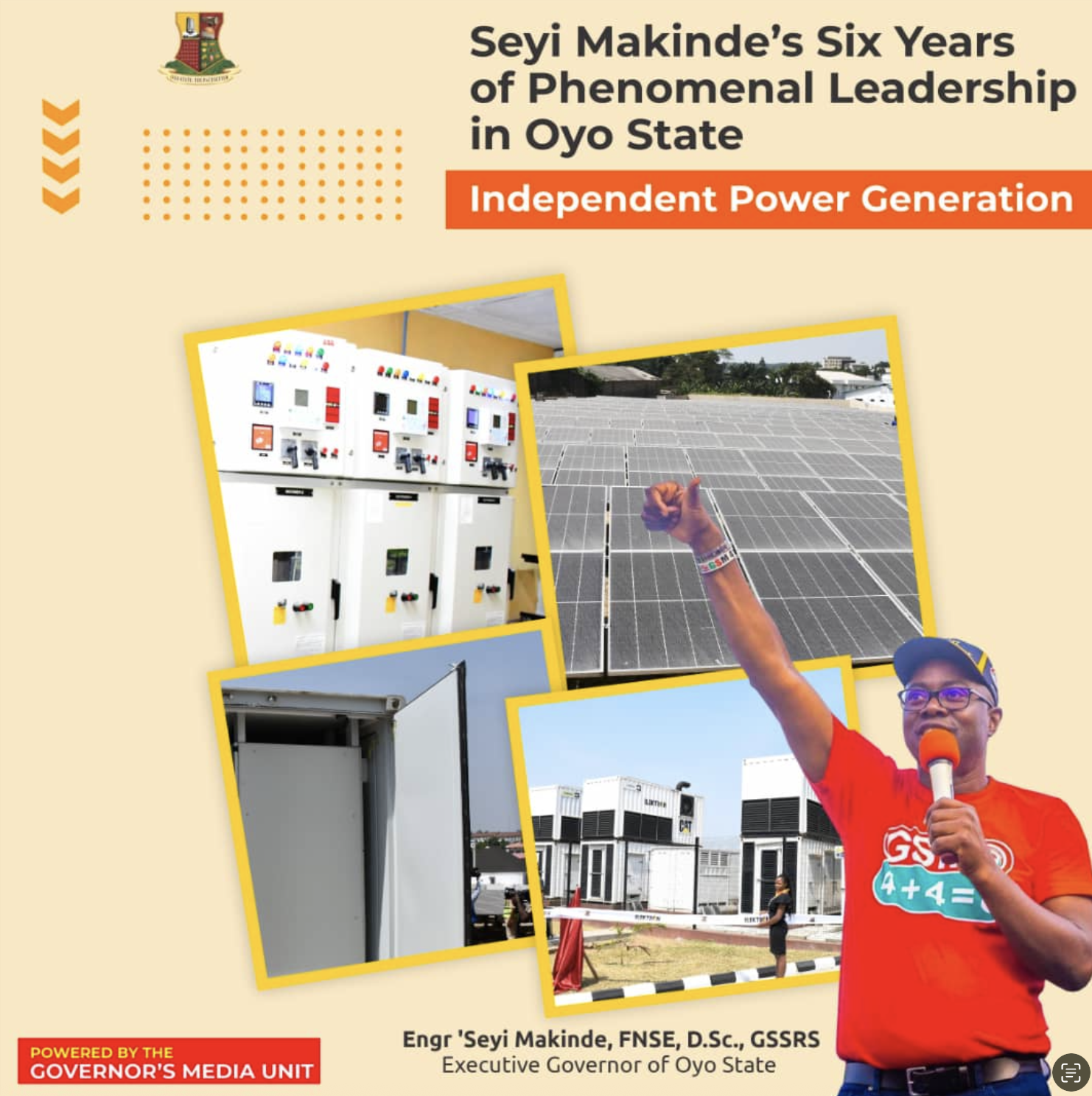As I turned back from the edge of the collapsed Olodo bridge where I had gone to have a personal assessment of the extent of work done on the new bridge being constructed by Oyo State Government last Tuesday, a sweating, swarthy, averagely built lady in her early thirties, clad in a deep blue frock, eased herself out of a cluster of about 10 people who had gathered nearby and charged at me. I sensed danger and experienced momentary inner turmoil but I managed to maintain an unflustered mien.
As she got closer to me, I offered her what I considered one of my disarming smiles and a stiff bow, wishing her a good afternoon.
But she was in no mood for niceties. With her eyes fixed on the Oyo State Government lapel pin on my jacket, she blurted, “What is so difficult about fixing a bridge that your government has been sleeping over something so important to so many people? Do you know how many people use this bridge on a daily basis? Do you know what those people go through as a result of the failure of your government to quickly fix the bridge? This thing is not rocket science now. Why can’t Seyi Makinde fix the bridge?”
Egged on by her comrades, the lady continued, talking nineteen to a dozen, “Do you know how this has affected businesses? Do you know that the value of real estate has dropped in this axis just because of this bridge? Will you believe it that some people have abandoned their houses and relocated to other parts of the city just because of the harrowing experiences they go through on a daily basis? There was a day I left Iwo Road by 5pm but didn’t get home until 11pm. What is the meaning of that? What is our offence?”
There was no stopping the lady who was livid with rage. Any attempt to do that would have been rebuffed. She was determined to push her exasperation to anyone in government. So, though discomfited, I patiently waited, in the glare of her comrades who were egging her on, until she was done with unleashing her spleen.
When she was a bit calmer, I empathized with her and others. I told them of the Governor’s resolve to make life better for all citizens and residents of the state. I assured them that Governor Seyi Makinde would not betray the trust reposed in him by the people of the state. I echoed the Governor’s promise that Omituntun 2.0 would be better than Omituntun 1.0. I reminded them of the various promises made by the Governor which he has fulfilled. I told them about the tuition-free schools. I told them about the Moniya-Iseyin Road. I intimated them with the General Gas-Akobo Bridge. I reminded them of LAUTECH and many more. Sensing that they were getting mollified, I asked the lady what she knew about the Ibadan-Iwo-Osogbo road, part of which is the collapsed Olodo Bridge.
“What do I need to know about the road or the bridge other than that they are both in a deplorable state? All I want is a road and a bridge that I can use without being stuck in traffic for hours. Is that too much to ask from you people?”
When she learnt that the road was a federal government road, she said, “Really? So, why has the federal government not come to our aid in Oyo State to fix the road? Why should the FG subject us to such hardship in Oyo State? Are we not part of the country? This is not fair at all.”
Then she was told that Oyo State Government, due to the premium placed on the comfort and wellbeing of the citizens, had taken up the responsibility of fixing the Oyo State stretch of the road and had awarded the contract to Peculiar Ultimate Concerns, which had actually started the reconstruction process before the flood of July 30, 2023 swept away the Olodo Bridge.
She was aghast. “Abi you dey whine me ni? I can’t believe that. You mean our dear Governor, Engineer Seyi Makinde, is going to reconstruct this federal road? That’s quite commendable. That shows the depth of his commitment to the welfare of the people. Kudos to the Governor for taking up the task of reconstructing the road and fixing the bridge,” she paused. “But even at that the state could have done a better job with the alternative route provided for the people.”
I told her that the alternative route is a service road originally designed to serve a few houses. So, in the tradition of service roads, it is narrow and cannot cope with the heavy traffic that usually throngs the Ibadan-Iwo-Osogbo road. Consequently, the traffic is slow. This is compounded by the impatience of some drivers, who, in their bid to shunt, often create gridlock. To correct this, and relieve commuters’ burden, the government has ensured that men of the Oyo State Traffic Management Authority (OYRTMA) are always available to address traffic issues.
I sensed her anger as well as that of the cluster that had grown to about 25 dissipating as she said, “I cannot but express appreciation to the Governor on behalf of all the people making use of the alternative route for the prompt action of the government in providing this route despite its many challenges. While I thank the Governor, I still find it difficult to come to terms with the fact that the work rate on the bridge is particularly slow and people are suffering. We thank the Governor for what he has done about the alternative route and what he is doing about the bridge but he should speed it up and save us from the nightmare we daily go through.”
I chuckled.
“You consider it a laughing matter? I can put my money on it that you don’t live anywhere near here. If you did, you would know that this is a very serious matter,” my new-found friend said.
I parried her question but took time to explain to her that unlike many other items, a bridge could not be picked off the shelf. I told her that bridge construction is a matter of process, adding that if the process is not duly followed so many lives could be endangered. Noticing her growing interest, I informed her that the contractor was about completing the stage of piling.
“Piling? What is that?” she queried.
Relying on what I had heard from the Commissioner for Public Works and Transport, Professor Dahud Kehinde Sangodoyin, I explained that piling forms the very basis of construction. It is the foundation that supports the transfer of structural loads from the structure to the ground. I further told her that piling has to do with the use of concrete that requires time to cure.
“Time to cure?” she asked. “What does it mean for concrete to cure?”
Now belligerence had given way to interest, warmth had replaced wrath. Again, I had to resort to what Professor Sangodoyin had said to walk her and others through the labyrinth of bridge construction. I told her that curing is the process of allowing the chemical reaction known as hydration to occur, where water reacts with cement particles to form a crystalline structure, which usually takes 28 days. The end result is the rock-like hard, resistant surface that is required for a bridge. I explained that not giving concrete enough time to properly cure would deprive the concrete the opportunity to attain its full potential in terms of strength and durability, adding that this would affect its life span.
“Oh, I see. What you are actually driving at is that there is no way to speed up the process of bridge construction. It is either you want a bridge that would last by giving it time to go through the process or you want a bridge that would collapse under you, and our darling Governor Makinde would not want that. I think it makes quite a lot of sense.”
When she was reminded that the government had promised to deliver the bridge in six months, she said, “My initial reaction was that why would it take the government six solid months to reconstruct the bridge? I wanted the bridge fixed the following day if it was possible.”
I told her that Governor Makinde would have wanted the bridge restored the very same day if it was possible.
Everyone burst into laughter.
I then asked her and others which one would have been easier for the government to do, rehabilitate what was left of the old bridge or construct a new one?
“Rehabilitating the old bridge,” they all chorused.
They were told that the Governor refused to toe the easy path because that would just be a placebo, a treatment that eases the pains for a while but does not permanently solve the problem.
“This new bridge would bring permanent solution to the problem,” volunteered a young man spotting a black shirt on a pair of denim.
I nodded in agreement. Others also did.
“Wow! In spite of everything, I thank God the bridge collapsed during the time of Governor Seyi Makinde. If this had happened at some other time, it would probably have been patched, postponing the evil day,” a fortyish fair-complexioned man of average height said.
“Yes,” others chorused.
I encouraged them to look beyond the current inconveniences occasioned by the bridge reconstruction and traffic diversion to a time when the bridge would be ready and the road would have been reconstructed.
“The pains and the frustration would be gone. Commuting would become easier, better and faster. Value of property in this area would appreciate and all of those who have left would return,” the lady said.
“Exactly,” someone from the group said.
As a clincher I asked them which they would prefer, a hurried job that would not last long and would not subject them to much inconvenience or a little inconvenience now that would ensure that the infrastructure would serve them and the generations after them very well.
Their answer was obvious from the smiles on their faces.
“Please, tell our Governor that we love and appreciate him,” one of them said.
“Yes o, and we will keep loving and supporting him,” said another.
Seeing their cheerful faces and their joyful mood, I knew it was time to say my goodbye. I took permission to leave and made for my car in measured steps, feeling the intensity of their gazes on my back.
Olanrewaju is the Chief Press Secretary to Governor Seyi Makinde.
























